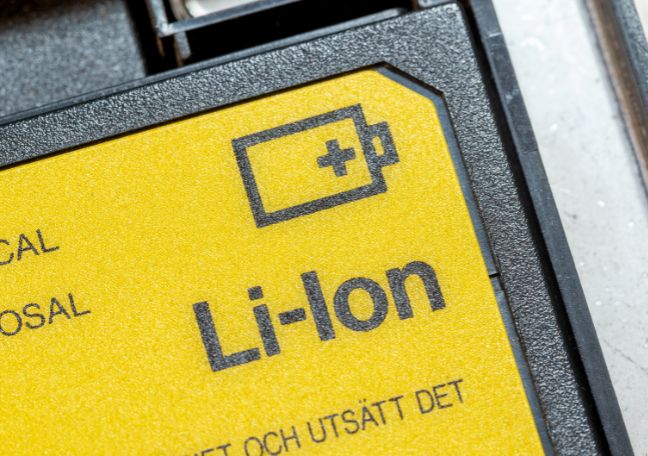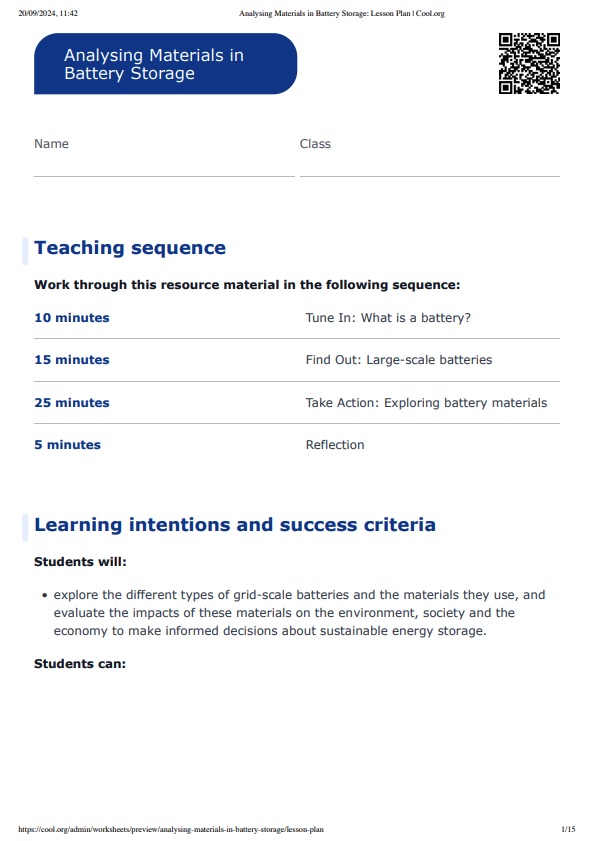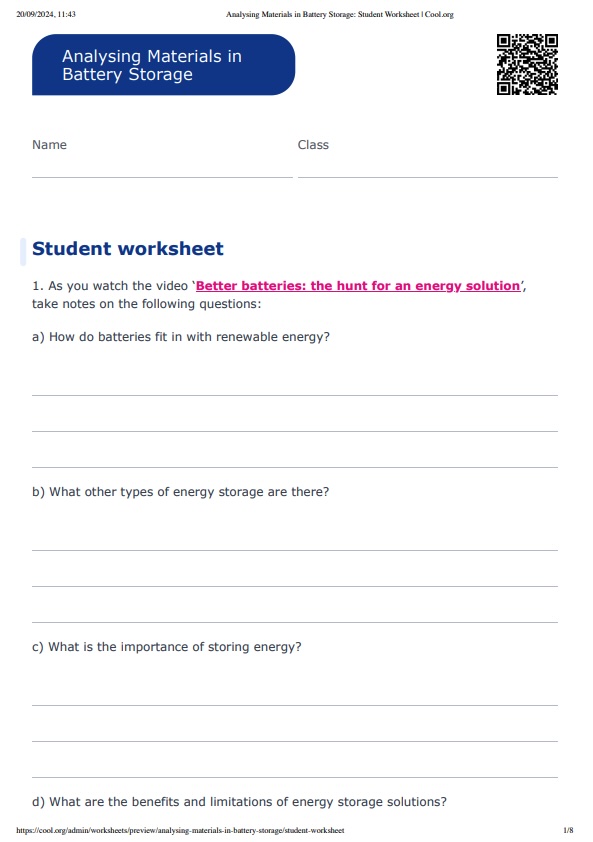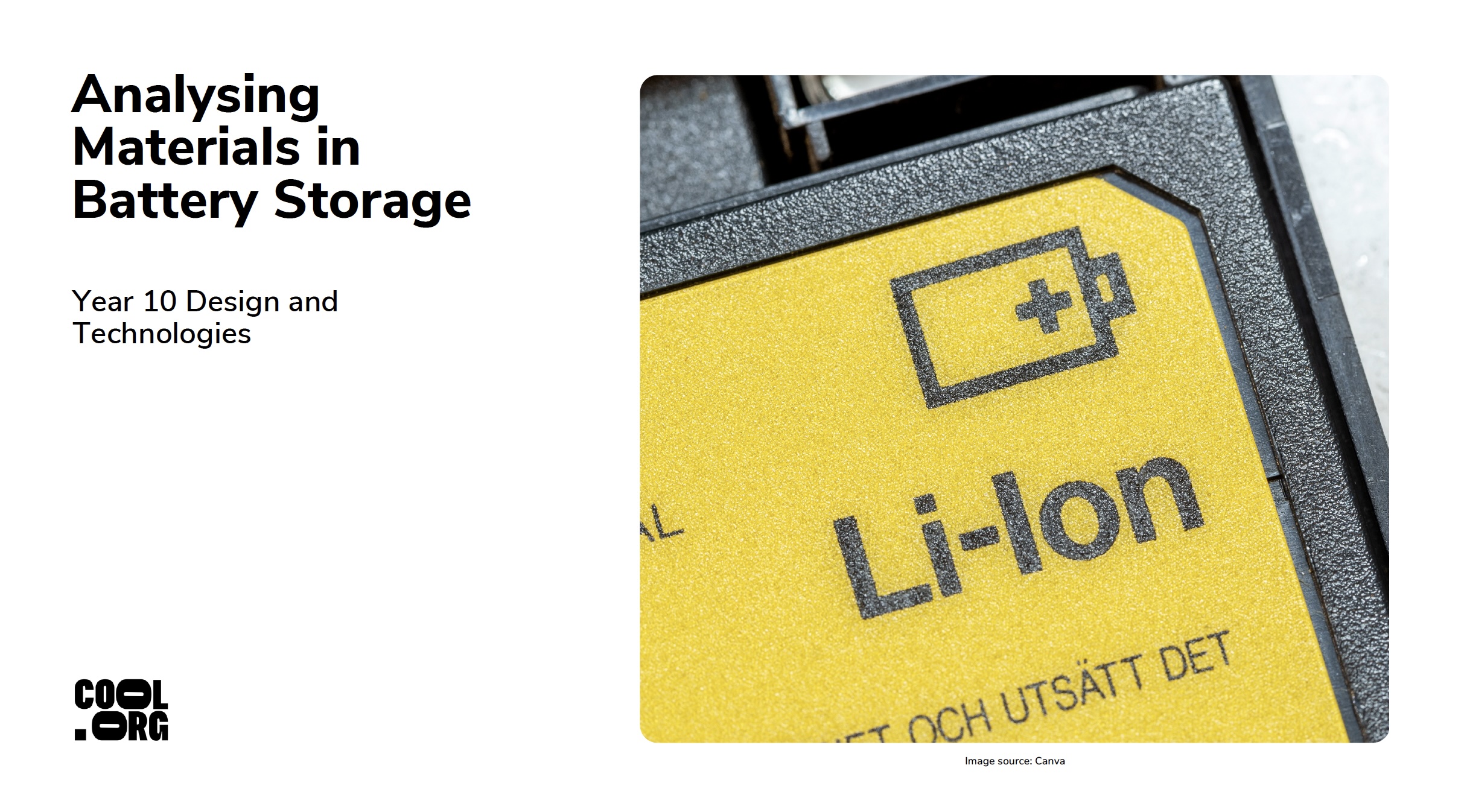Lesson summary
Students will investigate grid-scale battery technologies, analyse the materials and components used, and evaluate their sustainability. They will develop design criteria to assess the suitability of different battery types for use in Queensland by considering environmental, social and economic impacts and making judgements on the best solutions for sustainable energy storage.
Learning intentions:
Students will...
- explore the different types of grid-scale batteries and the materials they use, and evaluate the impacts of these materials on the environment, society and the economy to make informed decisions about sustainable energy storage.
Success criteria:
Students can...
- describe the different types of batteries used in grid-scale energy storage systems and their applications in renewable energy.
- categorise the materials used in different battery storage systems explaining their properties and sources.
- evaluate the environmental, social, and economic impacts of sourcing materials for battery technologies and recommend which battery type would be most suitable for future use in Queensland based on these factors.
Lesson guides and printables
Curriculum links
Select your curriculum from the options below.
Lesson details
Skills
This lesson is designed to build students’ competencies in the following skills:
- creative thinking
- critical thinking
- collaboration
- communication
- global citizenship
- problem-solving
Curriculum Mapping
Australian Curriculum (v9.0) content description: Year level 9 & 10, Design and Technology
Students learn to:
- analyse needs or opportunities for designing; develop design briefs; and investigate, analyse and select materials, systems, components, tools and equipment to create designed solutions (AC9TDE10P01)
- analyse and make judgements on how characteristics and properties of materials, systems, components, tools and equipment can be combined to create designed solutions (AC9TDE10K06)
Relevant parts of Year 9 & 10 achievement standards: Students can explain how people consider factors that impact on design decisions and the technologies used to design and produce products, services and environments for sustainable living. They explain the contribution of innovation, enterprise skills and emerging technologies to global preferred futures.
NSW Syllabus outcomes:
- evaluates and explains the impact of past, current and emerging technologies on the individual, society and environments (DT5-3)
- evaluates designed solutions that consider preferred futures, the principles of appropriate technology, and ethical and responsible design (DT5-5)
General capabilities: Critical and Creative Thinking, Digital Literacy, Ethical Understanding, Literacy.
Cross-curriculum priority: Sustainability
UN Sustainable Development Goals
UN SDG 12: Ensure sustainable consumption and production patterns
- Target 12.2: By 2030, achieve the sustainable management and efficient use of natural resources.
Resources Required
- Device capable of displaying audiovisual material
- Student devices for individual research
Additional Info
This lesson has been developed in partnership with the Queensland Government through Queensland's Clean Energy Workforce Roadmap. Cool.org would like to acknowledge and express our gratitude to the Clean Energy Council for the expertise and advice provided in creating these resources.
Related Professional Learning
STEM Professional Learning Pathway
Quick summary: Enhance your practice with Cool.org's STEM Professional Learning Pathway. This year-long plan is designed to build your skills and capabilities in teaching STEM, ultimately transforming you into a STEM Innovator. The pathway will prepare you to integrate STEM education effectively, adapt to technological advancements and inspire students to succeed in a rapidly evolving world.





Welcome back!
Don't have an account yet?
Log in with:
Create your free Cool.org account.
Many of our resources are free, with an option to upgrade to Cool+ for premium content.
Already have an account?
Sign up with:
By signing up you accept Cool.org's Terms and Conditions(Opens in new tab) and Privacy Policy(Opens in new tab).